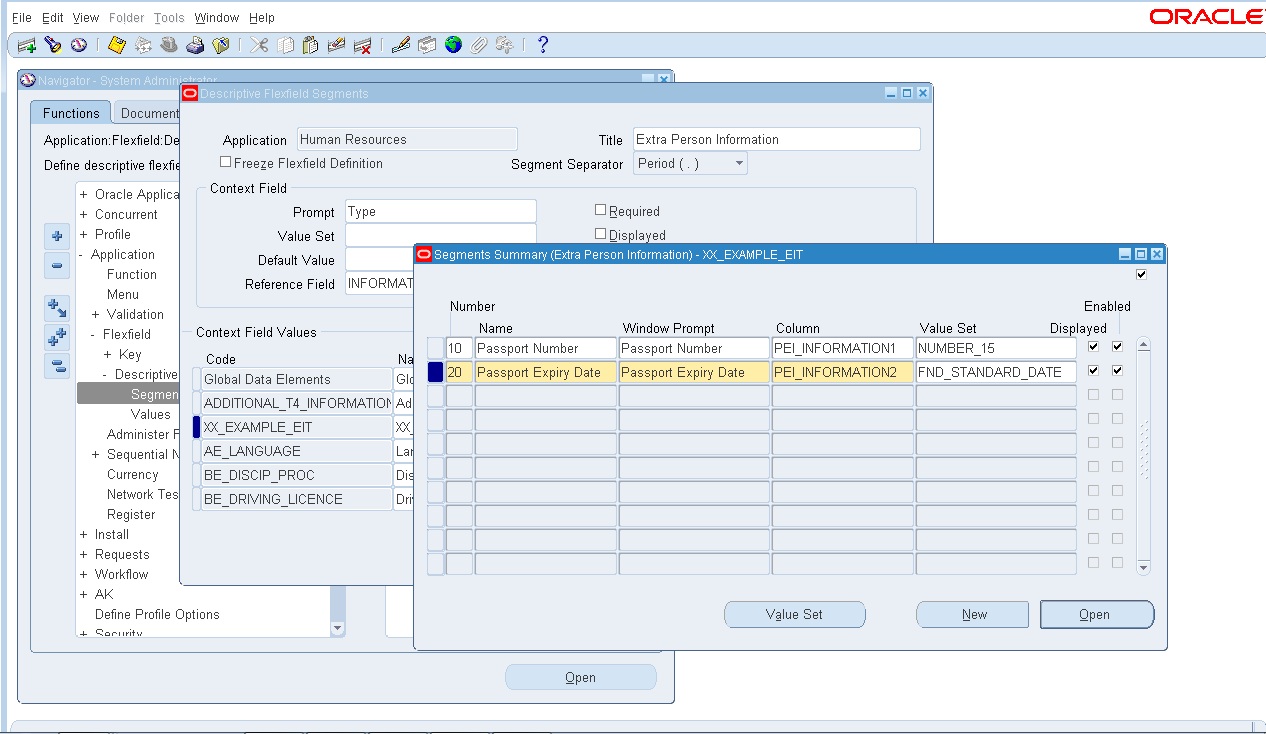What is an EIT??
EIT is used to store some extra information about
Features:
EIT is a DFF.
EIT is used to store data, where same data is changed quite often.
EIT is used to store some extra information about
- Employee
- Assignments
- Jobs
- Positions
- Locations
- Previous Job
- Contacts
and some other as well.
Features:
EIT is a DFF.
EIT is used to store data, where same data is changed quite often.
EIT can be opened at Multiple levels, so very helpful in storing as detailed data as possible.
How to create an EIT??
Navigation: System Administrator --> Application --> Flexfield --> Descriptive --> Segments
Search flexfield title by name Extra Person Information, as shown below.
Search flexfield title by name Extra Person Information, as shown below.
Unfreeze the key flexfield and add a new record under the Context Field Values section as shown below.
Press the Segments button
Create the number of segments as desired and attach validation sets to each field accordingly as shown below.
Create the number of segments as desired and attach validation sets to each field accordingly as shown below.
Save & Close. Don't forget to Freeze Flexfield Definition.
Now switch to Global HRMS Manager Responsibility.
Now switch to Global HRMS Manager Responsibility.
Now we need to run the concurrent Program named "Register Extra Information Types (EITs)"
After the request is completed successfully, navigate to
Navigation: Global HRMS Manager --> Security --> Information Types Security
Navigation: Global HRMS Manager --> Security --> Information Types Security
Search for your relevant responsibility, add the EIT under the selected responsibility as shown below.
Let’s check that either SIT has been successfully registered or not.
Navigation: Global HRMS Manager --> People --> Enter & Maintain --> Others --> Extra Information
Query:
SELECT PEI_INFORMATION1 PASSPORT_NUMBER,
TO_DATE (SUBSTR (PEI_INFORMATION2, 1, INSTR (PEI_INFORMATION2, ' ') - 1),
'YYYY/MM/DD'
) PASSPORT_EXPIRY_DATE
FROM PER_PEOPLE_EXTRA_INFO
WHERE INFORMATION_TYPE = 'XX_EXAMPLE_EIT'



.jpg)


No comments:
Post a Comment